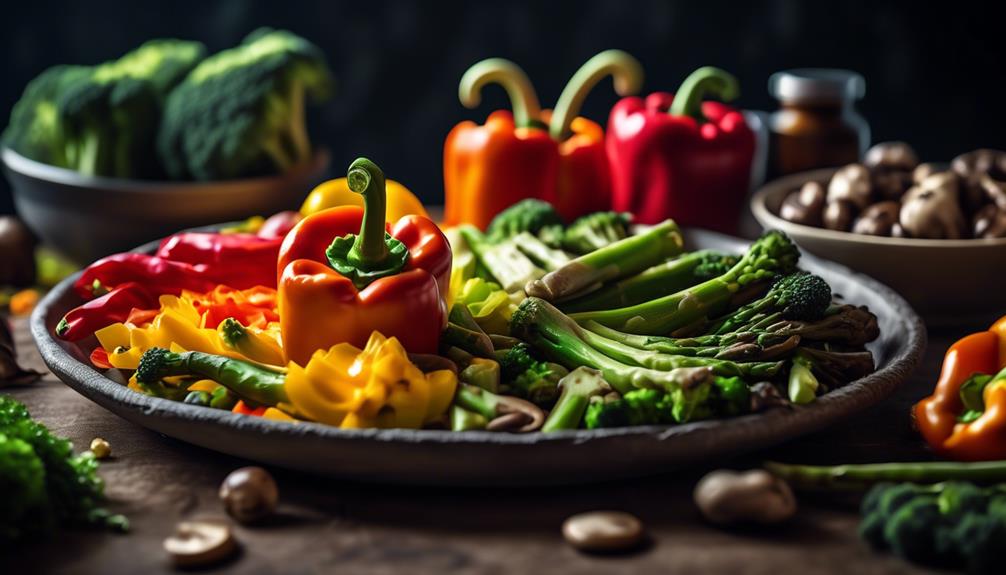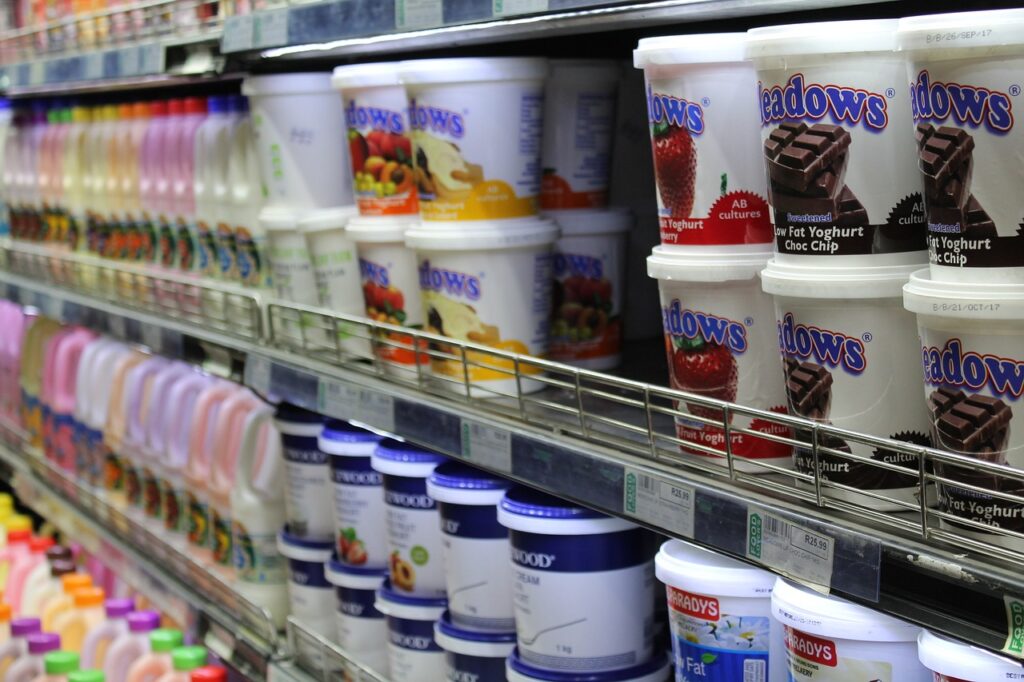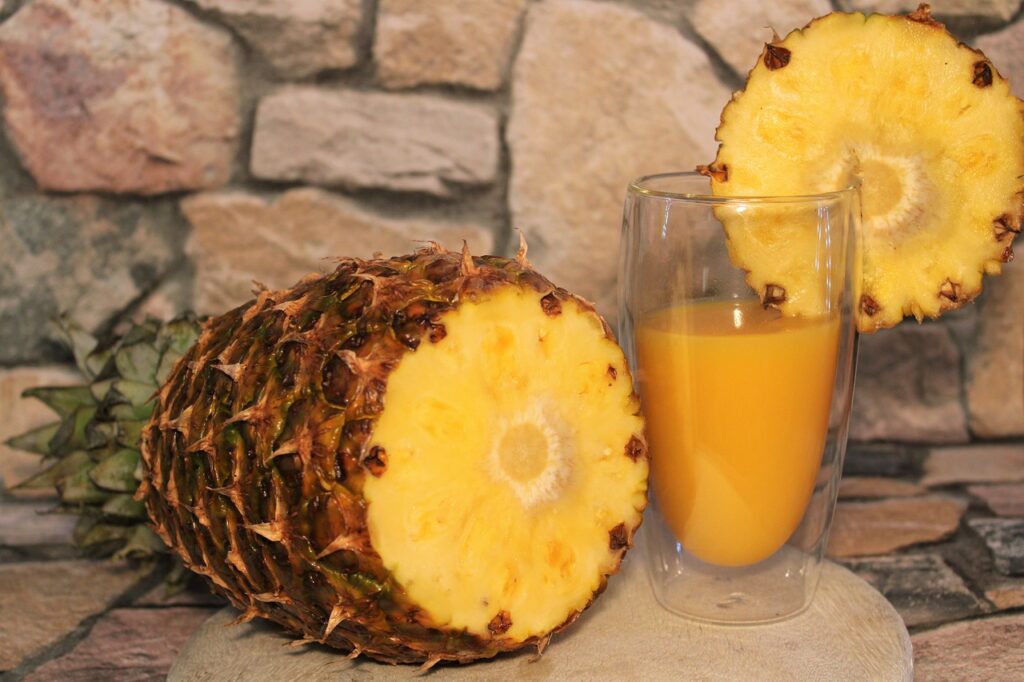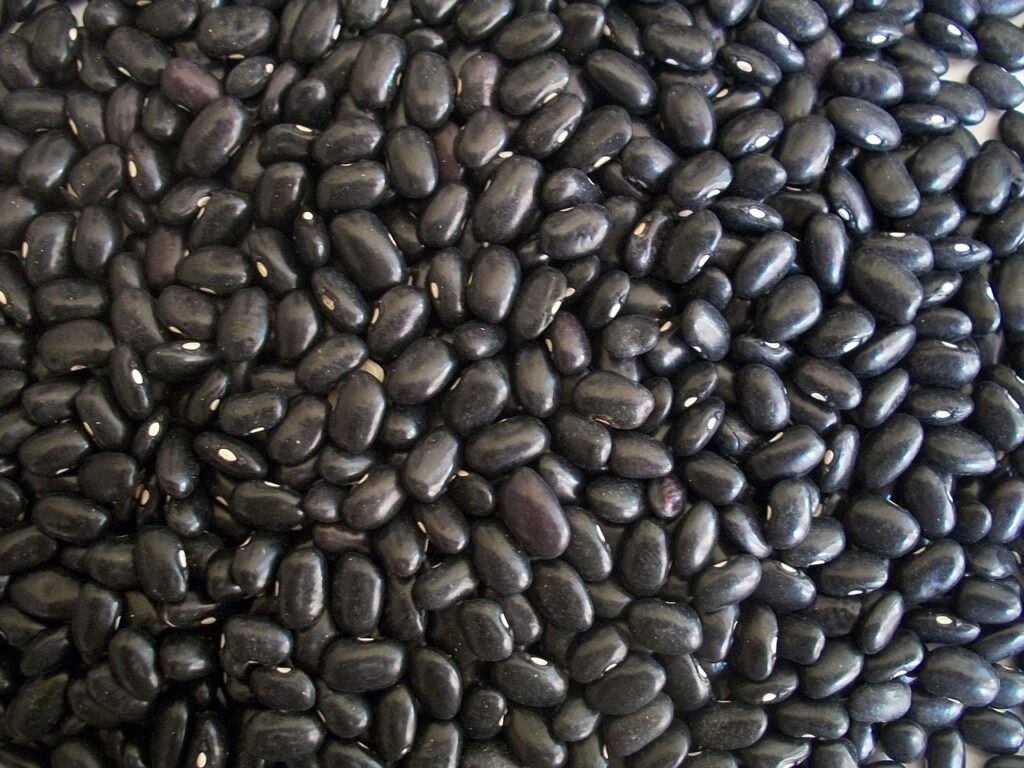Are you tired of feeling limited in your dairy-free keto diet? Look no further, because we have the perfect solution to add some flavor and variety to your meals.
Imagine biting into a tender roasted zucchini, or savoring the crispy goodness of bacon-wrapped green beans. These delicious low-carb keto vegetables not only fit seamlessly into your dairy-free lifestyle, but they also provide you with the nutrients and satisfaction you need.
But that's not all, there's a secret ingredient that will take your taste buds to the next level. Keep reading to uncover the secret and discover a whole new world of dairy-free keto vegetable options.
Broccoli

Did you know that broccoli is a nutrient-rich cruciferous vegetable that's low in carbs and high in fiber, making it a great option for a dairy-free keto diet? Not only is broccoli delicious, but it's also incredibly versatile and can be used in a variety of low-carb recipes. Whether you prefer steaming, roasting, or sautéing, broccoli can be prepared in different ways to bring out its natural flavors and textures, making it the perfect side dish for your dairy-free keto meals.
One of the reasons why broccoli is a fantastic choice for a dairy-free keto diet is its nutritional value. It's a good source of vitamin C, vitamin K, and folate, providing essential nutrients while keeping the carb count low. This means that you can enjoy the benefits of broccoli without compromising your dietary goals.
When it comes to incorporating broccoli into your dairy-free keto recipes, the possibilities are endless. You can add it to dairy-free casseroles, stir-fries, and salads, adding a satisfying crunch and flavor to the dish. By including broccoli in your meals, not only are you adding a nutrient-packed vegetable to your diet, but you're also ensuring that your meals are low in carbs and dairy-free.
Cauliflower
Cauliflower, a versatile and low-carb vegetable, offers a multitude of options for dairy-free keto diets. Whether you're looking for a rice or mashed potato substitute, cauliflower can fulfill your cravings without the added carbs.
You can easily create cauliflower rice by simply pulsing cauliflower florets in a food processor until they resemble rice grains. This can then be sautéed with your favorite herbs and spices for a flavorful and satisfying side dish.
For a crispy and flavorful option, try air frying cauliflower florets with seasonings of your choice. This method gives you a crunchy texture without the need for dairy or excess carbohydrates.
Cauliflower can also be transformed into a creamy and dairy-free alternative to mashed potatoes or mac and cheese. Simply steam or boil the cauliflower until tender, then blend it until smooth. Add in some nutritional yeast, garlic powder, and salt for extra flavor.
Incorporating cauliflower into casseroles and soups is another great way to enjoy this vegetable in a dairy-free and keto-friendly manner. You can chop it into small florets and add it to your favorite recipes for added texture and nutrition.
Lastly, roasted cauliflower with spices and herbs makes for a tasty and healthy side dish that's both low-carb and dairy-free.
Spinach

Spinach isn't only delicious but also packed with health benefits. This leafy green is a nutritional powerhouse, providing essential vitamins and minerals like vitamin A, vitamin C, and iron.
Incorporating spinach into your dairy-free keto diet is easy, as it can be enjoyed in salads, soups, stir-fries, smoothies, and omelets.
Health Benefits of Spinach
Incorporating spinach into your dairy-free keto diet can provide numerous health benefits due to its nutrient density and high antioxidant content. Here are some key reasons why spinach is a great addition to your diet:
- Low in carbs, high in fiber: Spinach is a low-carb vegetable that's also high in fiber. This means it can help you stay in ketosis while promoting healthy digestion.
- Rich in vitamins and minerals: Spinach is packed with vitamins A and C, which are powerful antioxidants that can support your overall health. These vitamins play a crucial role in maintaining a strong immune system.
- Good source of iron and anti-inflammatory compounds: Spinach is also rich in iron, an essential mineral that helps transport oxygen in the body. Additionally, it contains plant compounds that may help reduce inflammation, promoting better overall well-being.
Incorporating spinach into your dairy-free keto diet is a simple and delicious way to diversify your nutrient intake and support your health goals. Whether enjoyed raw in salads or cooked in various dishes, spinach is a versatile vegetable that can provide a nutritional boost to any meal.
Delicious Spinach Recipes
To add a burst of flavor and nutrition to your dairy-free keto diet, try these mouthwatering spinach recipes.
First, indulge in Spinach and Bacon Stuffed Chicken Breasts. This delicious main dish features tender chicken breasts stuffed with a savory combination of spinach and crispy bacon.
If you're craving a comforting soup, make Creamy Dairy-Free Spinach Soup. This flavorful recipe combines spinach, coconut cream, and aromatic spices for a satisfying meal.
For a quick and easy side dish, try Spinach and Mushroom Saute. Cooked in dairy-free olive oil, this dish pairs perfectly with any keto meal.
If you're looking for a tasty snack or appetizer, whip up Dairy-Free Spinach Artichoke Dip. This creamy dip is made with dairy-free ingredients and is perfect for entertaining.
Lastly, enjoy a refreshing and nutritious Spinach Salad with Avocado Dressing. Topped with a creamy dairy-free avocado dressing, this salad is a delicious option for your keto diet.
Asparagus
Grill, roast, or sauté asparagus for a versatile low-carb vegetable option on your dairy-free keto diet. Asparagus isn't only delicious, but it's also packed with essential nutrients. Here are some reasons why you should consider adding asparagus to your dairy-free keto meals:
- Nutrient-rich: Asparagus is a nutrient powerhouse, providing a good amount of fiber, folate, and vitamins A, C, and K. These nutrients are essential for overall health and can support your body's functions.
- Versatile addition: Asparagus can be incorporated into a variety of dishes, such as salads, stir-fries, and omelets. Its mild flavor pairs well with other ingredients, allowing you to create flavorful and satisfying meals.
- Flavorful options: Enhance the taste of asparagus by seasoning it with olive oil, garlic, and lemon. This simple combination adds a burst of flavor and complements the natural taste of asparagus.
If you're looking for a tasty appetizer, consider wrapping asparagus in dairy-free bacon. This combination of flavors creates a delicious keto-friendly treat.
Zucchini

Zucchini is a versatile vegetable that offers numerous nutritional benefits. It's low in carbs and calories, making it an ideal choice for those following a low-carb or keto diet.
You can enjoy zucchini in various ways, such as spiralizing it into noodles, stuffing it with ingredients, or blending it into soups and sauces for added creaminess.
Incorporating zucchini into your dairy-free dishes is a delicious and nutritious way to enhance your meals.
Zucchini Nutrition Benefits
Zucchini, with its low carb content and high fiber, is an excellent choice for those following a keto diet looking to incorporate nutritious vegetables into their meals. Here are some nutrition benefits of zucchini:
- Zucchini is packed with vitamins A and C, which are essential for a healthy immune system. These vitamins help protect the body against infections and promote overall well-being.
- The vegetable is rich in antioxidants, such as beta-carotene and lutein, which have anti-inflammatory properties. Consuming zucchini can help reduce inflammation and improve overall health.
- Zucchini is low in calories, making it a great addition to a weight management plan while on a keto diet. It provides a satisfying volume of food without adding excessive calories.
Incorporating zucchini into your keto meals can provide numerous health benefits while keeping your carb intake in check. Try adding zucchini to salads, stir-fries, or even using it as a substitute for pasta with zucchini noodles.
Zucchini Cooking Ideas
To continue exploring the versatility of zucchini in your keto meals, let's now dive into some creative cooking ideas that will elevate your dairy-free dishes.
Zucchini can be spiralized and used as a low-carb alternative to pasta, making it perfect for those following a keto diet. Try making zucchini noodles or even zucchini lasagna for a delicious and satisfying meal.
Another idea is to slice zucchini into rounds and grill or roast them with olive oil, garlic, and herbs. This simple preparation method adds a wonderful flavor to the zucchini and makes for a tasty side dish.
If you're looking for a dairy-free main course, consider stuffing zucchini with a mixture of ground meat and spices, then baking it until tender.
For a quick and easy snack, make zucchini fritters by combining grated zucchini with almond flour, eggs, and seasonings, then pan-fry until golden brown.
Lastly, if you're craving pizza, use zucchini as a base by slicing it lengthwise, roasting it, and adding your favorite dairy-free toppings.
These zucchini cooking ideas aren't only keto-friendly but also perfect for dairy-free diets.
Cabbage
Cabbage is a versatile and nutritious low-carb vegetable that can be enjoyed in a variety of dishes. Here are three reasons why you should consider adding cabbage to your dairy-free diet:
- Fiber and Nutrients: Cabbage is packed with fiber, providing a feeling of fullness and aiding in digestion. It's also rich in essential nutrients like vitamin C and vitamin K, which support immune function and bone health.
- Versatile Cooking Options: Whether you prefer stir-fries, soups, or salads, cabbage can be incorporated into numerous recipes. Its mild flavor allows it to blend well with other ingredients, enhancing the taste and texture of your dishes.
- Low in Carbs: For those following a keto or low-carb diet, cabbage is an excellent choice. It contains fewer carbohydrates compared to other vegetables, making it a great option to satisfy your cravings while staying on track with your dietary goals.
To enjoy cabbage in your dairy-free diet, you can try it raw in salads, pickled for a tangy twist, sautéed for added flavor, or even roasted for a crispy texture. With its versatility and nutritional benefits, cabbage is a fantastic addition to any dairy-free meal plan.
Brussels Sprouts

If you're looking to add another versatile and nutritious low-carb vegetable to your dairy-free diet, Brussels sprouts are an excellent choice.
Brussels sprouts can be prepared in various ways to suit your taste preferences. One popular method is roasting them with olive oil and seasoning, which creates a crispy and flavorful side dish.
Another option is sautéing them with garlic and lemon juice, which adds a bright and tangy flavor to the sprouts.
If you're in the mood for a refreshing salad, you can shred Brussels sprouts and use them in a low-carb slaw with a dairy-free dressing.
Additionally, these versatile vegetables can be added to soups, stews, and stir-fries to enhance their nutritional value.
For a creamy and dairy-free soup, you can puree cooked Brussels sprouts until tender.
Not only are Brussels sprouts a delicious addition to your meals, but they're also packed with nutrients. They're a good source of fiber, vitamins C and K, and antioxidants.
Incorporating Brussels sprouts into your dairy-free diet can help you maintain a healthy and balanced eating plan.
Bell Peppers
Bell peppers are a versatile and nutritious addition to a dairy-free keto diet. These low-carb keto vegetables come in various colors, including red, green, and yellow, adding vibrant hues to your dishes. They can be enjoyed in a variety of ways, whether raw in salads, roasted, sautéed, or stuffed with dairy-free fillings. Incorporating bell peppers into your meals not only adds flavor and texture but also provides a range of health benefits.
Here are three reasons why bell peppers are a great choice for a dairy-free keto diet:
- Rich in vitamin C and antioxidants: Bell peppers are packed with vitamin C, which helps support a healthy immune system. Additionally, they contain antioxidants that can help protect against oxidative stress and inflammation.
- Low in carbs: With only 6 grams of net carbs per cup, bell peppers are a low-carb option for those following a keto diet. They can be enjoyed in moderation while still maintaining ketosis.
- Crunchy and satisfying: The crunchy texture and sweet flavor of bell peppers make them a delicious and satisfying snack or side dish. They can add a refreshing element to your meals, making them more enjoyable.
Green Beans

When it comes to dairy-free keto vegetables, green beans are a fantastic option that can be enjoyed in a variety of delicious ways. Not only are they low in carbs, but they're also packed with essential nutrients like vitamins A, C, and K, as well as fiber. Green beans are easy to make and can be prepared in different ways to suit your taste.
One simple and flavorful way to enjoy green beans is by sautéing them with olive oil and garlic. This cooking method brings out their natural sweetness and adds a savory twist.
Another option is to roast them in the oven with a sprinkle of salt, pepper, and a drizzle of coconut oil. This gives the green beans a crispy texture and enhances their flavor.
If you prefer a lighter approach, steaming green beans is a great choice. Simply steam them until they're tender and bright green, then top them with dairy-free butter or a squeeze of lemon juice for a refreshing and tangy taste.
Green beans can also be incorporated into stir-fries, salads, or served as a simple, nutritious side dish.
Kale
Kale is a nutrient-packed superfood that can be a valuable addition to your dairy-free keto diet. Not only is it low in carbs and high in fiber, but it also contains essential vitamins and minerals that support overall health.
With its versatility in cooking options, you can enjoy kale sautéed, roasted, or in salads, making it a delicious and keto-friendly choice for your meals.
Nutrient-Packed Superfood
Rich in essential nutrients and packed with vitamins, antioxidants, and fiber, kale is a powerhouse superfood that can be incorporated into a variety of delicious dishes. Whether you're following a dairy-free or keto diet, kale is a versatile option that can meet your nutritional needs.
Here's why kale deserves a place in your dairy-free keto recipes:
- Nutrient-Dense: Kale is a nutrient-packed leafy green, loaded with vitamins A, C, and K, as well as antioxidants and fiber. It provides a wide array of essential nutrients to support overall health and well-being.
- Low in Carbs: With only about 6-7 grams of net carbs per 100 grams, kale is a low-carb vegetable that fits perfectly into a keto diet. It offers a satisfying and nutritious alternative to higher-carb vegetables.
- Dairy-Free Calcium: For those avoiding dairy products, kale is an excellent source of calcium, ensuring you meet your calcium needs without relying on dairy. It's a great way to support bone health while sticking to a dairy-free lifestyle.
Incorporating kale into your dairy-free keto recipes not only adds a burst of flavor and texture but also boosts the nutritional value of your meals. So, go ahead and experiment with this nutrient-packed superfood in your next dairy-free keto dish.
Versatile Cooking Options
To add a burst of flavor and nutritional value to your dairy-free keto recipes, kale offers versatile cooking options that can elevate your meals in a variety of creative ways.
Kale can be used in a variety of ways, such as sautéed, in salads, blended into smoothies, or baked into crispy chips. It's a versatile ingredient that can be incorporated into soups, stews, and casseroles to add a nutrient-rich boost.
You can also massage kale with oil and other flavors to make a delicious and tender base for salads or enjoy it as a standalone side dish.
Consider adding kale to your stir-fries, frittatas, or omelets for a nutritious and flavorful addition to your meals. And don't forget to try adding kale to your favorite low-carb pasta dishes or using it as a nutrient-packed pizza topping for a dairy-free option.
Kale truly is a versatile and delicious keto vegetable that can enhance any dairy-free recipe.
Low-Carb and Keto-Friendly
Incorporating kale into your dairy-free keto diet can provide a low-carb and nutrient-rich addition to your meals. Here are some reasons why kale is a keto-friendly vegetable that you should consider adding to your diet:
- Low in carbs: Kale is incredibly low in carbohydrates, making it a suitable choice for those following a keto diet. It contains only 4 grams of net carbs per cup, making it an excellent option to keep your carb count low.
- High in fiber: Kale is packed with fiber, which can help regulate blood sugar levels and promote feelings of fullness. This can be especially beneficial for those on a keto diet, as it can help control cravings and prevent overeating.
- Nutrient-dense: Kale is a nutritional powerhouse, rich in vitamins A, C, and K, as well as antioxidants. These nutrients play a crucial role in supporting overall health and well-being.
Incorporating kale into your dairy-free keto diet can help diversify your meals while providing essential nutrients and keeping your carb intake in check.
Celery
Celery, a versatile and crunchy low-carb vegetable, is a refreshing addition to salads or a perfect snack with dip. This fiber-rich vegetable isn't only delicious but also packed with numerous health benefits. Celery is known for being a good source of antioxidants, which can help reduce inflammation and protect against chronic diseases. It also contains important nutrients like vitamin K, vitamin C, and potassium.
One of the great things about celery is its versatility in cooking. It can be used to add flavor to soups, stews, and casseroles, enhancing the overall taste of the dish. Whether you prefer it raw, steamed, or sautéed, celery provides different textures and flavors in various dishes.
For those following a keto diet and looking for dairy-free vegetable options, celery is an excellent choice. With its low carbohydrate content, it can be enjoyed without worrying about disrupting your ketosis. Plus, its natural crunchiness makes it a satisfying and guilt-free snack.
Next time you're looking for a low-carb vegetable to add to your meals or enjoy as a snack, don't forget about celery. Its versatility, health benefits, and delicious taste make it a great addition to any dairy-free keto diet.
Eggplant

If you're looking for another versatile and flavorful low-carb vegetable to incorporate into your dairy-free keto meals, look no further than eggplant. This vegetable can be prepared in various ways to suit your taste preferences.
Here are some dairy-free options for enjoying eggplant on a keto diet:
- Grilling, roasting, or sautéing eggplant can bring out its rich and meaty flavor. Try adding it to low-carb lasagna or baba ganoush for a delicious dairy-free meal.
- Need a dairy-free alternative for pizza crust? Slice the eggplant lengthwise and roast it until tender. Use it as a base for your favorite toppings to create a low-carb, dairy-free pizza.
- Eggplant can also be stuffed with a variety of fillings, such as ground meat, herbs, and spices, for a satisfying keto-friendly dish. Get creative and experiment with different flavors to find your favorite combination.
Incorporating eggplant into your dairy-free keto meals provides a tasty and nutritious option. Don't forget to try it in a dairy-free ratatouille, a flavorful and colorful dish that perfectly fits a low-carb keto diet. Enjoy the many possibilities that eggplant offers for your dairy-free and low-carb lifestyle.
Radishes
Are you looking for new ways to cook radishes?
There are several cooking methods you can try, including roasting, sautéing, or grilling, which can help bring out their natural sweetness and mellow their peppery flavor.
In addition to being delicious, radishes also offer several health benefits, such as being a good source of vitamin C, fiber, and antioxidants.
With their versatility and nutritional profile, radishes can be a great addition to your dairy-free diet.
Cooking Methods for Radishes
To prepare radishes using a variety of cooking methods, you can roast them, stir-fry them, pickle them, make chips out of them, or incorporate them into a refreshing salad. Here are some simple yet delicious ways to cook radishes:
- Roasted Radishes: Toss radishes in olive oil, season with salt and pepper, then roast until tender and slightly browned.
- Radish Stir-Fry: Sauté radishes with garlic, ginger, and your choice of protein for a flavorful stir-fry.
- Pickled Radishes: Create a tangy side dish by pickling radishes with vinegar, water, and your choice of seasonings.
Health Benefits of Radishes
When it comes to the health benefits of radishes, these vibrant vegetables offer much more than just a delicious crunch.
With only 2 grams of net carbs per serving, radishes are an excellent choice for those following a low-carb or keto diet. Not only are they low in calories, but they're also high in fiber, making them a great option for weight management and digestive health.
Radishes are packed with vitamin C, an antioxidant that supports the immune system and promotes skin health. Additionally, they're a good source of potassium, which helps regulate blood pressure and support heart health.
Studies have also suggested that the natural compounds found in radishes may have anti-cancer properties, reducing the risk of certain types of cancer.
Lastly, their high water content can contribute to hydration and overall health.
Incorporating radishes into your diet can provide a range of health benefits, making them a fantastic addition to any meal.
Recipe Ideas With Radishes
Looking for creative ways to incorporate radishes into your meals? Here are some recipe ideas that will make your taste buds sing!
- Roasted Radishes: Roasting radishes brings out their unique earthy flavor and tender texture. Simply toss radishes with olive oil, salt, and pepper, and roast in the oven until they're golden and crispy.
- Pickled Radishes: Add a tangy crunch to your salads by pickling radishes. They're also a great addition to sandwiches or tacos, providing a burst of flavor and texture.
- Radish 'Crackers': Looking for a low-carb alternative to crackers? Slice raw radishes and use them as a base for dips and spreads. They add a refreshing crunch and are perfect for those following a keto diet.
These recipe ideas with radishes aren't only delicious but also suitable for dairy-free diets. Enjoy the versatility and health benefits of these keto vegetables in your meals!
Mushrooms
Mushrooms, a versatile low-carb vegetable, can be a delicious and nutritious addition to your dairy-free keto diet. These fungi aren't only packed with flavor but are also a great source of nutrients, making them a valuable ingredient in your meals. With their meaty texture and earthy taste, mushrooms can be used in various dishes. Grilling, sautéing, or roasting them can enhance their natural flavors, adding depth to your meals.
Additionally, mushrooms can be used as a substitute for meat in some dishes, making them perfect for plant-based keto meals.
When following a dairy-free keto diet, you can incorporate mushrooms into your meals in creative ways. For example, you can use them as a topping for your avocado salad. Sautéed or grilled mushrooms can add a savory element to the creamy avocado, providing a satisfying and nutritious combination. Not only will this make your salad more filling, but it will also provide you with a variety of vitamins, minerals, and antioxidants that mushrooms offer.
Conclusion
In conclusion, incorporating delicious low-carb keto vegetables into a dairy-free diet can provide a wide range of flavors and nutrients. These vegetables, such as broccoli, cauliflower, spinach, and zucchini, offer a satisfying and nutritious option for those following a dairy-free keto lifestyle.
Research supports the benefits of these vegetables in promoting weight loss and maintaining a healthy low-carb diet. So, enjoy these tasty options and reap the benefits of a dairy-free keto lifestyle.







